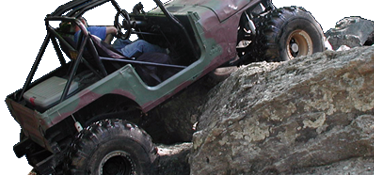MetalCraftSolved
Well-Known Member
- Joined
- Jun 20, 2010
- Location
- NC
OK lets try this, unfortunately I don't have easy access to a way to draw it out.
The control arms move up and down. Lets call this the Y dimension. However because they are on a pivot point, it's actually an arc - if you look at it from the front of the buggy, the outside of the wheel hub is farthest away from the differential when it is straight out. It is closer to the middle when at the highest and lowest points of travel. Lets call this view the Z dimension. There is no movement in X (hopefully!).
Now for a moment forget about the control arms and wheel hub and just think about that axle. It can bend in the X and Y dimensions. However this bending is bound at the center, in a circle. Imagine if that axle was in the differential and you held the shaft on teh other end of the CV in your hand and rotate it around clockwise. It's circular. but it also has an arc in the Z dimension just like the control arms do.
At the differential end, the arc centroid of the control arms and the arc of the axle shaft (in the Z domain) need to line up as well as possible. Commonly the axle one is much deeper in in order to minimize its movement.
The hub though is where it gets hard. The steering means the hub swivels, which means there is an extra dimension added that the control arms don't have. when the hub rotates, it actuallu puls the shaft out slightly, which changes its range of motion. So when the steering is at lock, the axle "cone" of rotation is different from when it is straight. and all of that must fit within the arc of the control arms.
It gets much worse b/c the steerin garms also have their own arc... and the point of pivot for the steering arms may not match the point of pivot for the control arms or the axle. Like in your drawing b/c the ram is wide. You get binding and breakage when all of these arcs intersect and things break when you go past the overlapping portions.
In an ideal magical fairyland world, all 3 have pivots in the same point, which is the very center of the vehicle. But the Second Law of Physics prevents that.
My prior use of the term "square" was incorrect, its more of a line b/c the control arms don't move in the X dimension.
I think I understand where your coming from with the axle cone. I intentionally eliminated that movement from my equation. The "King Pin" where the knuckle rotates is in direct alignment with the center of the CV bell. I didn't want to see any variation fore, and aft with the axle. It is set on a strictly vertical plane.
I'm under the impression that the variables in my equation consist of the shaft angle, caster angle, the steering angle, and the droop camber angle. Simplified now to 4 variables. I should probably keep an eye on the bump camber angle but, I think it's going to be irrelevant.


